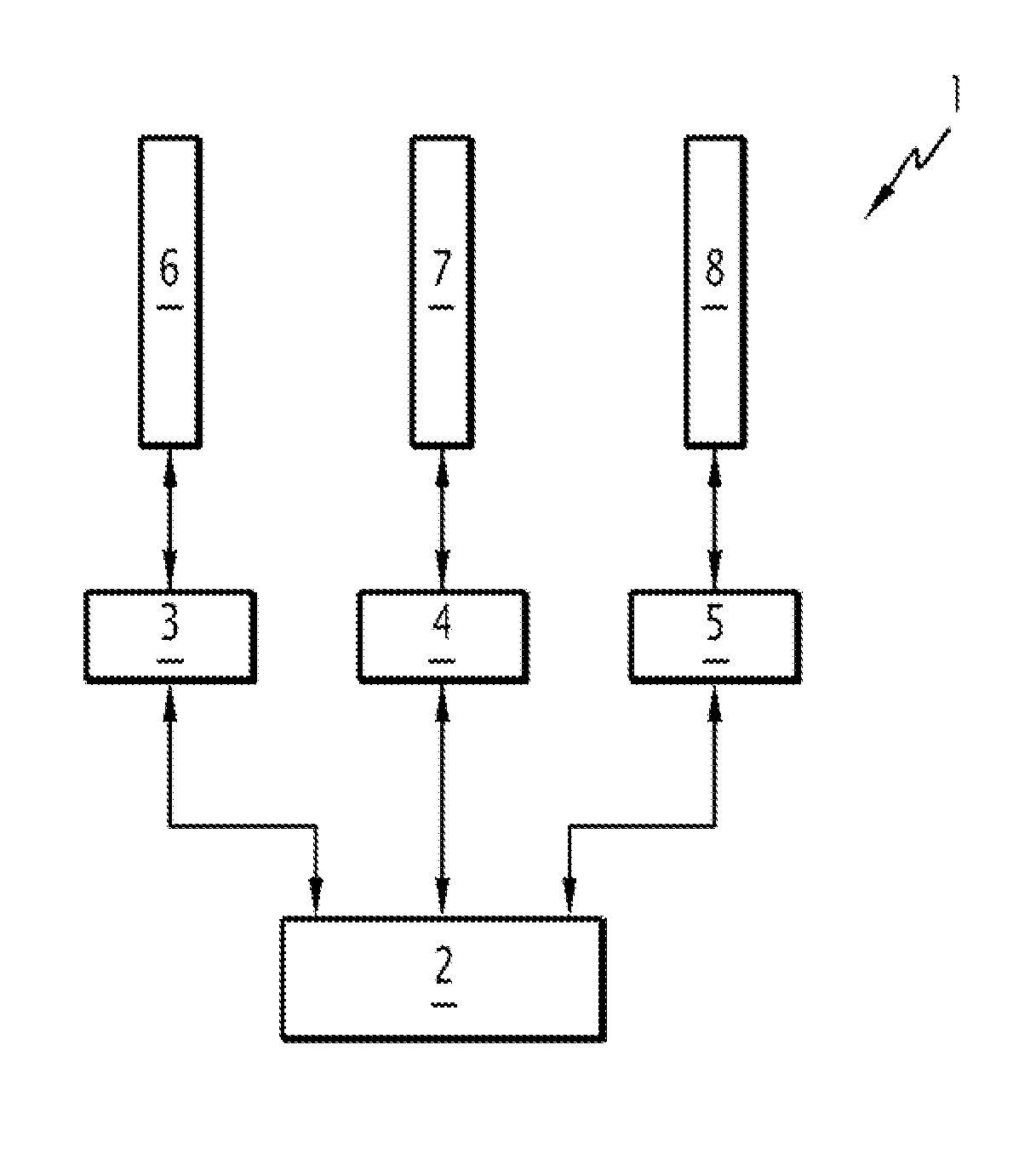Transceiver Station for Forming a Telecommunications Network Node and Associated Telecommunications Method
a technology of telecommunication network and transmission station, which is applied in the direction of network topologies, wireless commuication services, connection management, etc., can solve the problems of increasing implementation difficulties, affecting the operation independence of the network, and complicated merging networks, so as to improve the end-to-end efficiency of the network and reinforce the effect of network operation independen
- Summary
- Abstract
- Description
- Claims
- Application Information
AI Technical Summary
Benefits of technology
Problems solved by technology
Method used
Image
Examples
Embodiment Construction
[0049]FIG. 2 diagrammatically illustrates a transceiver station 1 in one embodiment of the invention, intended to constitute a node of an ad hoc radio network. Such transceiver stations will be called “nodes” hereafter.
[0050]The node 1 comprises a number N of radio modules, with N greater than or equal to two. In the case illustrated in FIG. 2 and considered in the embodiments described below, the number of radio modules is at least equal to three.
[0051]Each of the radio modules 3, 4, 5 is connected on the one hand to a control unit 2 and on the other hand to a radiofrequency transceiver antenna, in the considered case, respectively the antenna 6, 7, 8.
[0052]According to the embodiments, the antennas are of various types, for example omnidirectional, sectoral, smart sectoral (S-FESA antennas), smart omnidirectional (FESA antennas).
[0053]In certain embodiments, several radio modules are connected to a same antenna, the operation of which is distributed between the nodes.
[0054]The con...
PUM
 Login to View More
Login to View More Abstract
Description
Claims
Application Information
 Login to View More
Login to View More - R&D
- Intellectual Property
- Life Sciences
- Materials
- Tech Scout
- Unparalleled Data Quality
- Higher Quality Content
- 60% Fewer Hallucinations
Browse by: Latest US Patents, China's latest patents, Technical Efficacy Thesaurus, Application Domain, Technology Topic, Popular Technical Reports.
© 2025 PatSnap. All rights reserved.Legal|Privacy policy|Modern Slavery Act Transparency Statement|Sitemap|About US| Contact US: help@patsnap.com



